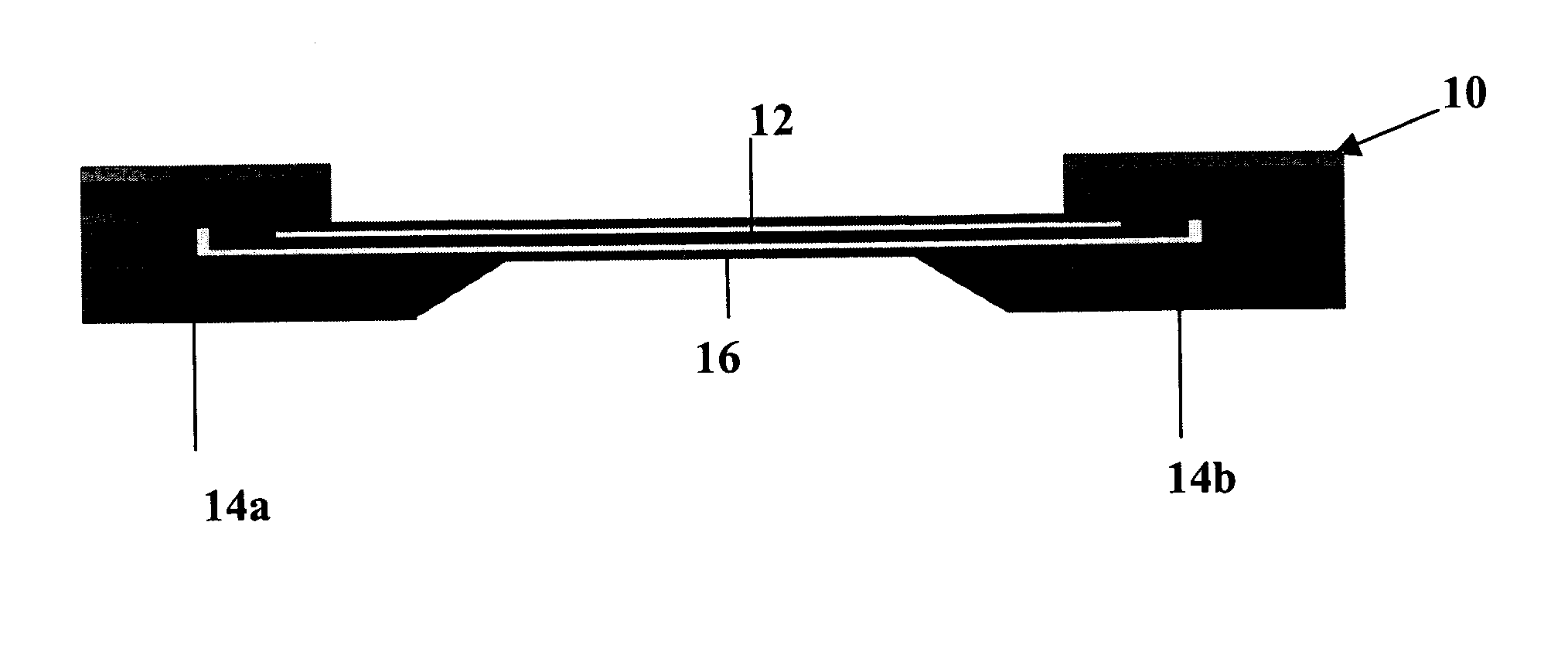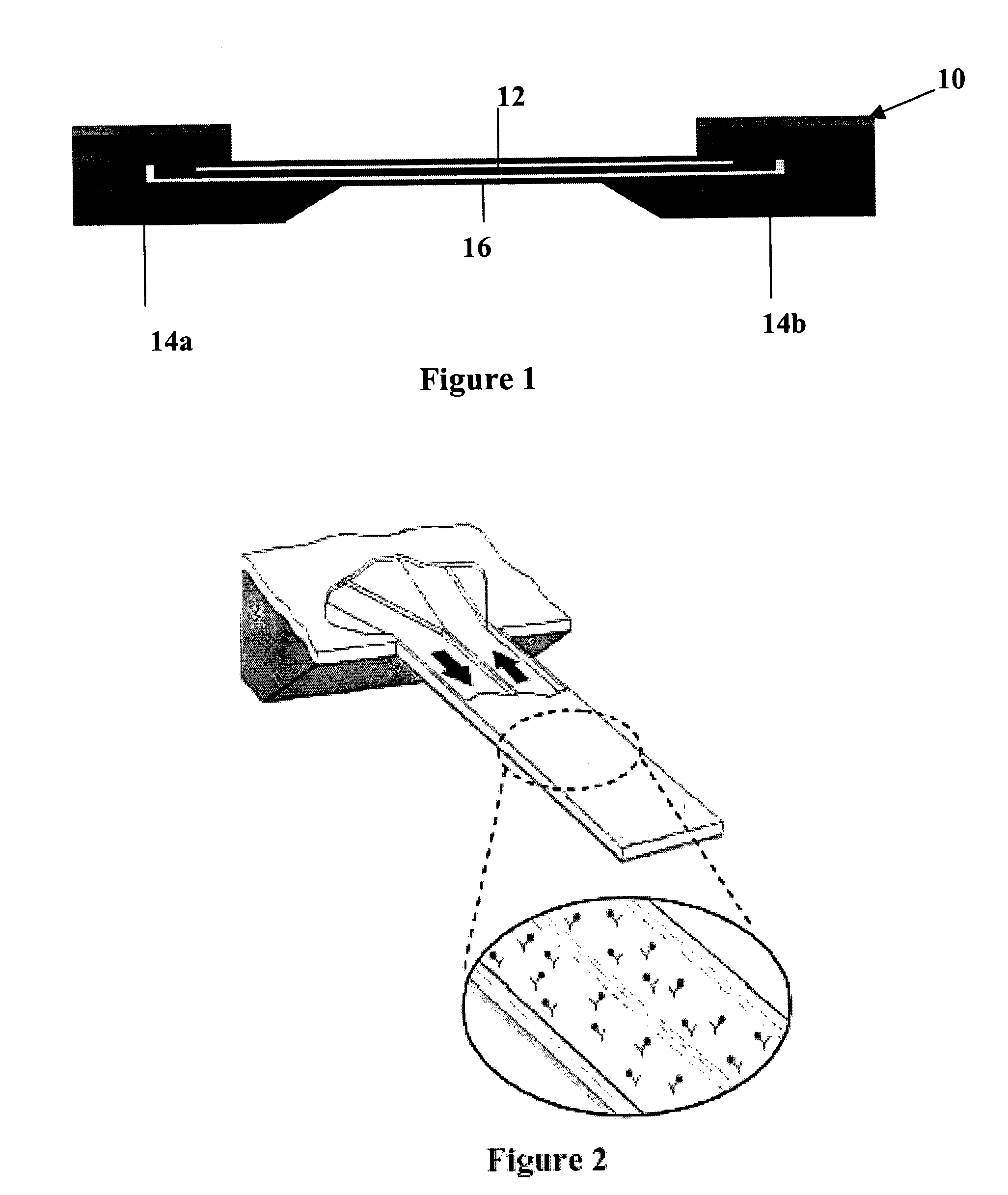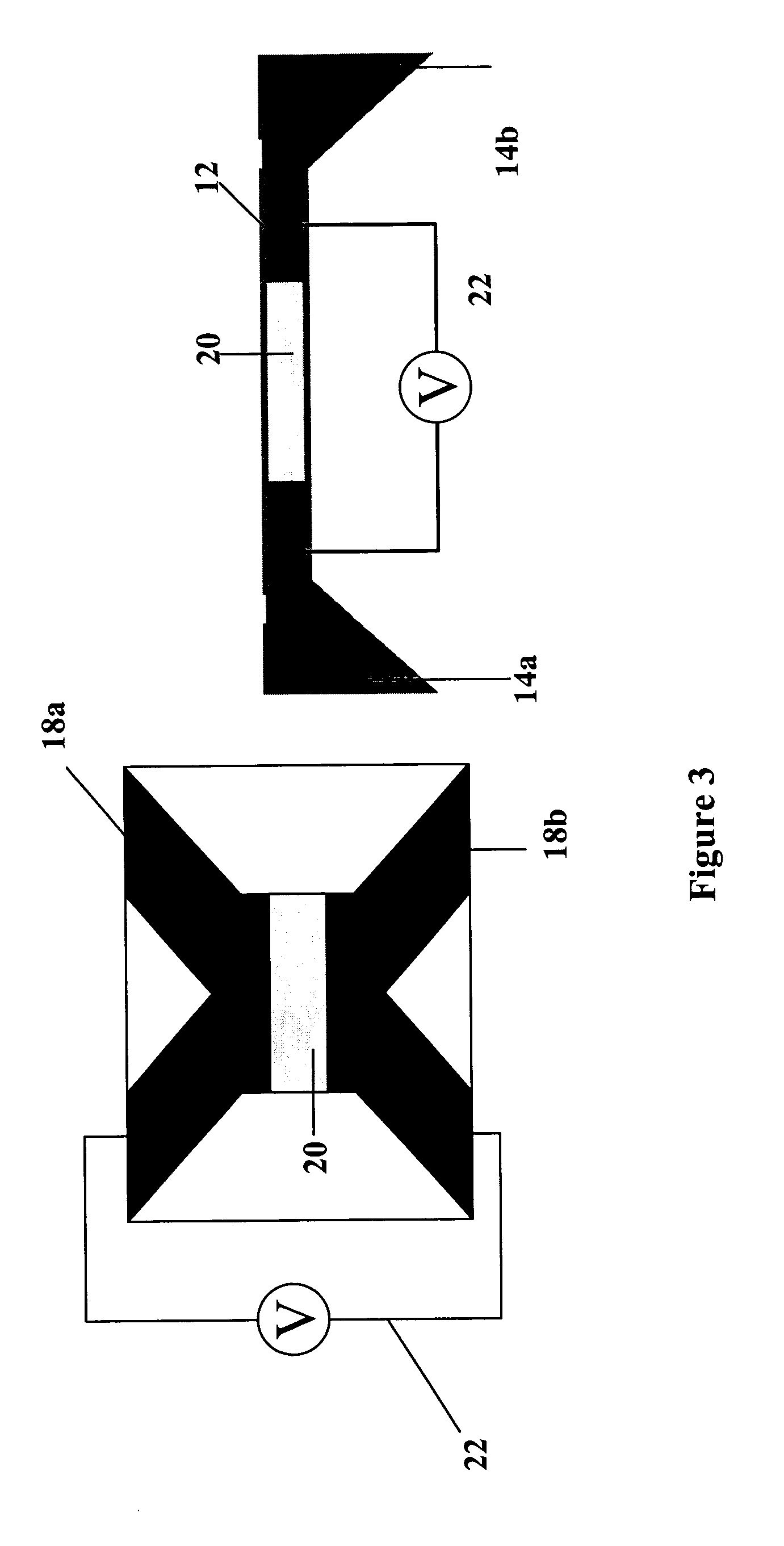Fabrication and packaging of suspended microchannel detectors
- Summary
- Abstract
- Description
- Claims
- Application Information
AI Technical Summary
Benefits of technology
Problems solved by technology
Method used
Image
Examples
examples
[0074] As described above, suspended microchannels for molecular detection must be sufficiently thin, and additionally they must be configured for continuous fluidic delivery for real-time measurements. To address both of these requirements, we combined a polysilicon Damascene process, sacrificial layer etching in hot potassium hydroxide, and bulk micromachining to fabricate suspended microchannels with a wall thickness of 800 nm and a fluid layer thickness of 1.2 μm. First, we etched microfluidic trenches in a standard silicon wafer using photolithography and reactive ion etching (RIE). The wafer was subsequently coated with 800 nm low-stress low-pressure chemical vapor deposited silicon nitride and followed by a 1.5 μm layer of polysilicon. The polysilicon layer was planarized with chemical mechanical polishing (CMP). The CMP process was timed to stop as soon as it reaches the silicon nitride layer so that the trenches remain filled with polysilicon. After the CMP, a second layer ...
PUM
| Property | Measurement | Unit |
|---|---|---|
| Thickness | aaaaa | aaaaa |
| Thickness | aaaaa | aaaaa |
| Thickness | aaaaa | aaaaa |
Abstract
Description
Claims
Application Information
 Login to View More
Login to View More - R&D
- Intellectual Property
- Life Sciences
- Materials
- Tech Scout
- Unparalleled Data Quality
- Higher Quality Content
- 60% Fewer Hallucinations
Browse by: Latest US Patents, China's latest patents, Technical Efficacy Thesaurus, Application Domain, Technology Topic, Popular Technical Reports.
© 2025 PatSnap. All rights reserved.Legal|Privacy policy|Modern Slavery Act Transparency Statement|Sitemap|About US| Contact US: help@patsnap.com



